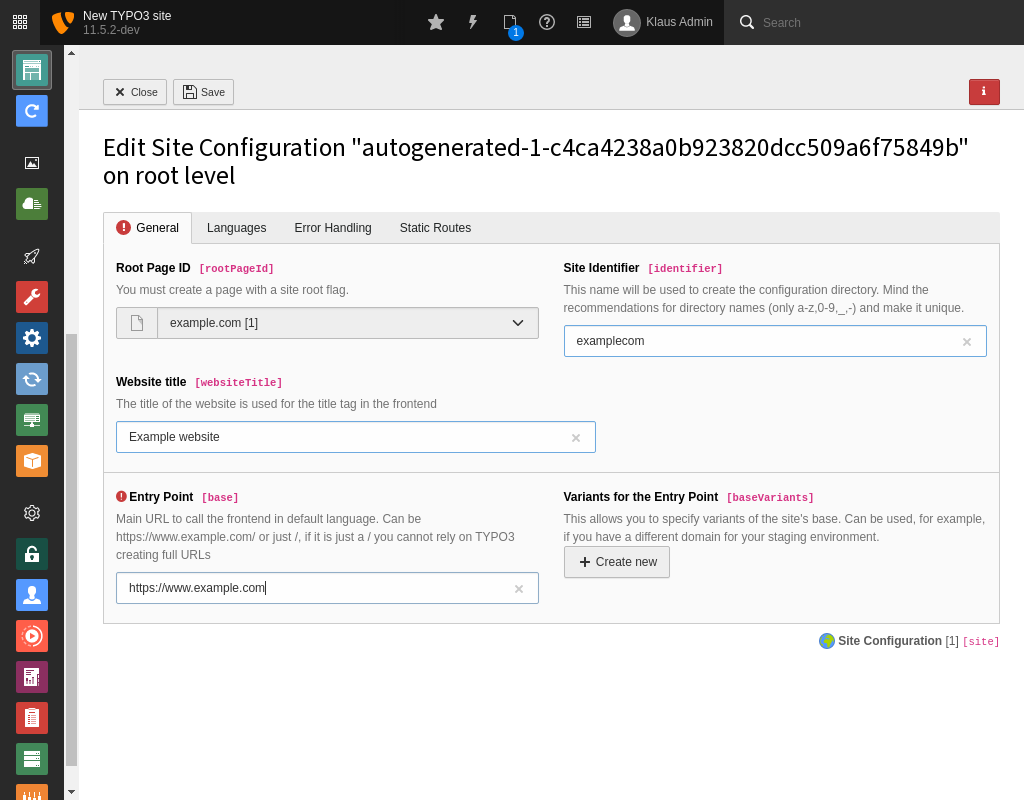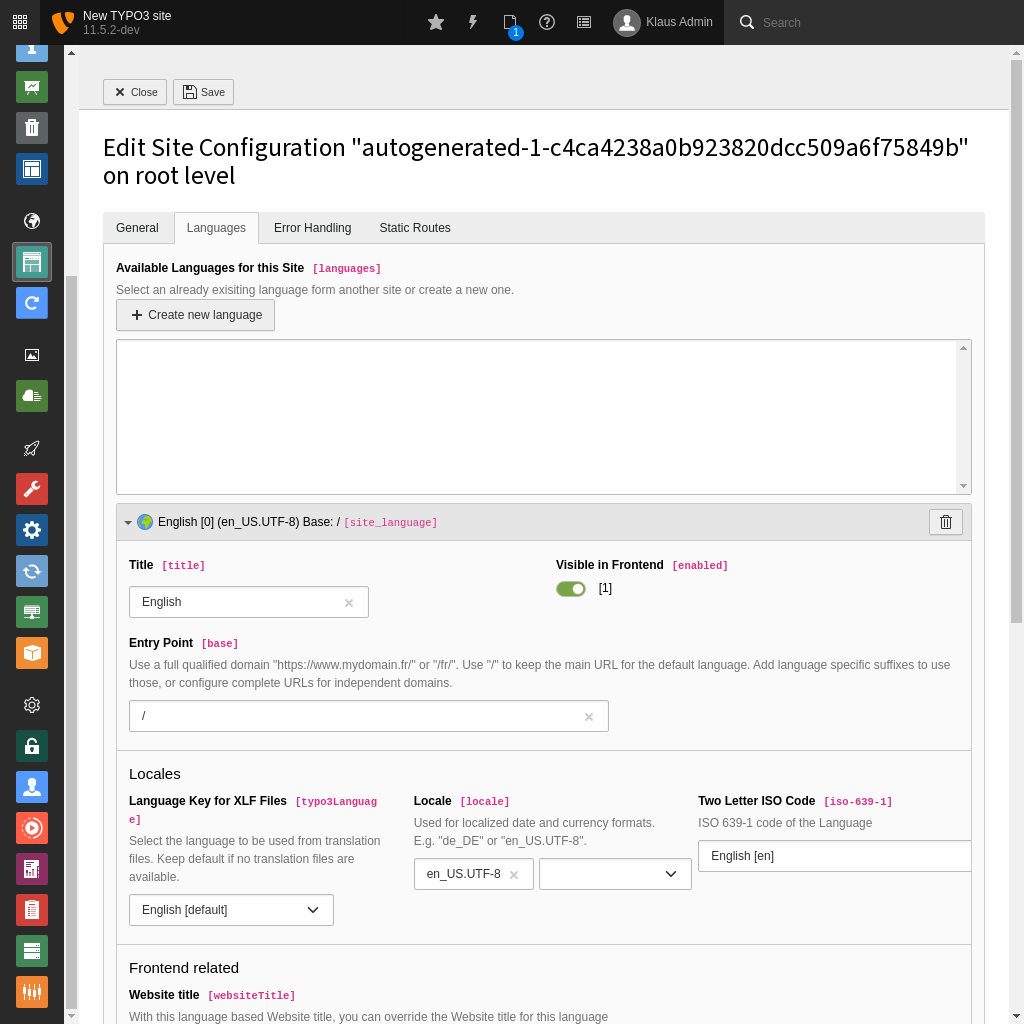Attention
TYPO3 v10 has reached end-of-life as of April 30th 2023 and is no longer being maintained. Use the version switcher on the top left of this page to select documentation for a supported version of TYPO3.
Need more time before upgrading? You can purchase Extended Long Term Support (ELTS) for TYPO3 v10 here: TYPO3 ELTS.
Creating a new site configuration¶
A new site configuration is automatically created for each new page on the rootlevel (pid = 0) and each page with the `is_siteroot` flag set.
To adjust the automatically created site configuration, go to module Site Management > Sites.

Autocreated site configuration¶
You can edit it by clicking on the Edit icon. If for some reason no site configuration was created there will be a button to create one:

The site configuration looks like this:

A new site creation form.¶
It is recommended to change the following fields:
The Site Identifier
Hint
The site identifier is the name of the folder within
<project-root>/config/sites/that will hold your configuration file(s). When choosing an identifier make sure to stick to ASCII but you may also use-,_and.for convenience. Examples:main-siteandlanding-page.The Entry Point
Tip
Be as specific as you can for your sites without losing flexibility. So, if you have a choice between using
https://example.org,example.orgor/, then choosehttps://example.org.This will make resolving pages more reliable as the chance for conflicts with other sites gets minimized.
If you need to use another domain in development, for example
https://example.ddev.site it is recommended to use
Base variants.
On the next tab Languages you are can configure the default language settings for your site. You can also add additional languages for multilanguage sites here.
These settings determine the default behavior - setting direction and lang tags in frontend as well as locale settings.

Set default language settings¶
Check and correct all other settings, as they will automatically be used for features like hreflang tags or displaying language flags in the backend.
That's all that is required for a new site.
Tip
Just by having a site configuration you get human-readable page URLs out of the box. Read more about how to configure the routing.
Learn more about adding languages, error handling and routing in the corresponding chapters.
